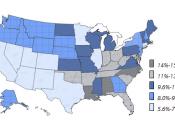ESHI422 Learners with Special Gifts/Talents
Learners with Special Gifts and Talents
Learners with special gifts and talents are rapid, creative learners or children of high intellectual potential. They are children who learn quicker, think deeper, and draw conclusions easier than others their age. Gifted and talented students can suffer social, emotional and communication difficulties due to their special abilities and as such, the way they should be treated in the school environment may have to be modified. Gifted children can be disruptive in a classroom environment and teachers must be aware of the techniques they can use to assist them with handling these problems. Support for parents and teacher's of gifted children is essential to promote the cognitive development of the child as well as to help minimise potential social and emotional problems.
The debates about what causes giftedness, as well as the definition of gifted, are very contentious issues.
Some stress the importance of motivation and effort, arguing that giftedness is a product of goal-directed hard work or repetitive practice (Ericsson, 1993), others suggest gifted children are not created by their environment but are born with unusual brains that enable rapid learning in a particular field (Winner, 2000). Neisser (1996) says that it is clear that genes make a substantial contribution to individual differences in intelligence while Simonton (1999) states that a genetic effect isn't a separate identity and only becomes apparent with specific nurturing conditions which may include influences from parents or teachers. Gifted and talented children are not simply the product of genetics or environment, nature or nurture, but are more likely to be the result of an amalgamation of these variables as well as individuals' motivation and consistent effort.
The term 'gifted' has been defined and rated differently by various academics and practitioners. It is...


